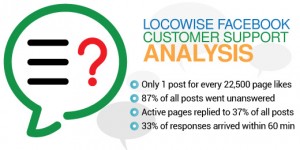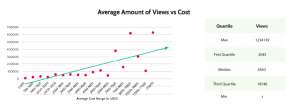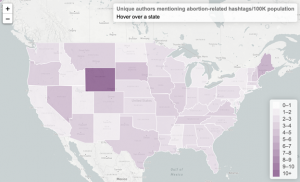As the resident International Customer Success rep here at WordStream, I have seen my share of multilingual campaigns. It’s a small world after all!

But diving into international waters can be a great challenge, so here are some of my tips on how to identify if you are ready to expand and how to set up your first experimentation for success.
So…why go international?
PPC is just like Disney World…expensive and overcrowded. Have you ever been on New Year’s? I have and even for the most dedicated Disney Freak it’s a true nightmare.

International PPC is like having the most amazing fast pass to the front of the line. Advertisers tend to stay away from exploring new countries or new languages for fear that there is no volume, which could not be farther from the truth.
Should You Try Creating Campaigns in a New Language? 7 Questions to Ask
Can you even service customers in another language? Are you doing it already?
Consider if a potential client walks in the door and tries to communicate with you in another language. Do you have the ability to service them? Does anyone in your company speak that language and can they help you communicate or close the sale? Are you already serving client calls, contact request forms and sales in different languages? If the answer to any of the ahove questions is YES, then you should probably be advertising in that language already.

If the answer is no, that is ok. Bilingual PPC can still be a strategy for you, but remember that when you open the door to this new market you might need to adjust your normal sales pitch. Many people can be potentially searching in a different language but are still able to communicate in English. According to a Google study, only 1 in five Hispanic searchers will look for a Spanish site when they land on an English site (Think with Google, 2015).
Are you ready to ALSO serve the international crowd?
One thing to remember is that multilingual does not always mean international. In the US alone, over 300 languages are spoken. So if your plan includes not only advertising to many languages, but also to many countries, make sure your landing pages have the following information to serve your new audience:
- International Pricing
- International Shipping Options
- International Phone Numbers (or at least the appropriate international dialing code to call you)
- Your Hours of Operation within your Time Zone
Even if you are not quite ready to start a full scale international invasion, great places to start venturing out to are Canada, Puerto Rico, and the U.S. Virgin Islands. These countries are used to dealing with online purchases in the US so you won’t have to make many or any changes to your site.
Are you located in a culturally diverse area?
Then consider advertising in the major languages spoken around you. I am looking at you, Texas and Florida. If you’re not optimizing AdWords for Spanish you are probably losing out on an untapped market.
For my fellow geographic nerds, enjoy these maps of the languages other than English most commonly spoken in each state. You might be surprised by how people around you are communicating.

What does your Search Query Data tell you?
The Search Query report gives you the real data of how potential leads are searching for your own ads. If you are starting to get relevant searches to your business in different languages, then crafting a new campaign is the next logical step to growing your account.
Do your reports say you are ready?
There are two reports you want to check out to see if you are already showing up for locations you may not have expected. In the AdWords Dimension tab, check out User Locations. This report will let you know exactly where the people who click on your ads are located. It might surprise you that even though you set location targeting within the US, some clicks can be coming from other locations.

The second report you want to look at is in Google Analytics. Check out what countries your website traffic is pulling in.
Does keyword research indicate there is good traffic?
The AdWords Keyword Tool allows you to find out search volumes for words within specific locations. Before you go out and create a test campaign, compile a list of a few important keywords for your business in the language you want to test and check out the volume. If there is not much happening there you might want to stop before diving deep into the international PPC experiment.
What does Google Trends say about search volume?
The Google Trends tool provides the complete search volume history of all terms Googled since 2004. It’s a great tool to check out volume trends of potential keywords and which locations they are most popular in.
Below is an example of the search term “lawyer” in English and Spanish (which I chose because it is one of the notoriously most expensive keywords of all time). If you look at the English term, it has stayed pretty stable throughout the years, with some peaks in volume.

Now if you look at the Spanish term’s volume, you can see it has constantly been growing over time – and, more specifically, in states like Florida and Texas.

Now that we have explored some questions you should ask yourself, here are a few tips on getting your bilingual or international PPC experiment started on the right foot.

You are ready young Padawan.
Bilingual and International PPC Best Practices
Always, Always, Always Separate Your Campaigns by Different Languages!
- Any AdWords experiment needs to be separated out from your regular PPC campaigns so we can test it without affecting you current efforts.
- Different languages and regions can also have drastic differences in CPCs, so you don’t want to lump it all under the same budget.
- Start with a smaller test budget, unless your bank account looks like this:

Turn on Multiple Languages in Your Campaign Settings
Maybe diving full scale is not your thing and that is ok. Simply switch on more languages that you want to focus on:

Remember Keyword Research Is Not One Size Fits All
A common language most marketers in the US will start experimenting with in PPC is Spanish. It’s the second most commonly spoken language in the US with about 41 million native speakers plus 11 million who are bilingual. The difficulty here is that Spanish speakers have many dialects and for search this means we need to figure out the most appropriate terms to target.
Let’s take a simple word like bus to demonstrate the differences in dialects. These are all the variations of this one word in 6 different Spanish-speaking countries.

Google Translate goes a long way in helping you craft a keyword list, but when in doubt try having a native speaker on hand to help you come up with new suggestions.
When Doing Ad Scheduling Remember the Time Zones!
AdWords always defaults to the time zone where the account was created. This is something you cannot change EVER! So always consider your account time zone and the targeted location time zone when doing any time scheduling or bid adjustments.
Mobile is KEY
Most international users don’t have access to desktops but they readily have access to phones. In fact, 68% of Hispanics who are searching on Google do it on a mobile device. Bidding higher on mobile, crafting mobile-specific ads and creating Call-Only campaigns could prove very successful as an international strategy.
Digital & Social Articles on Business 2 Community(97)
Report Post








